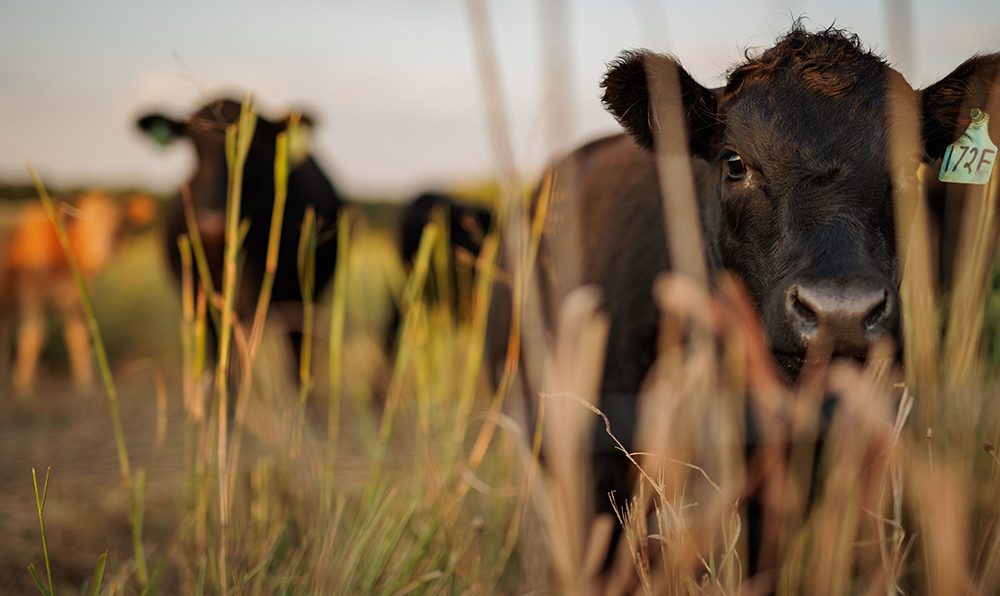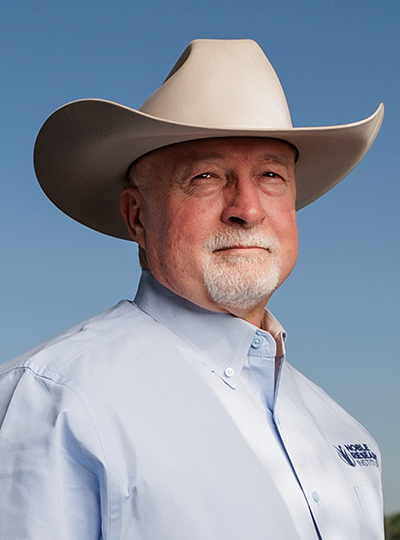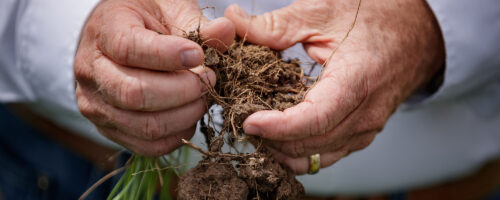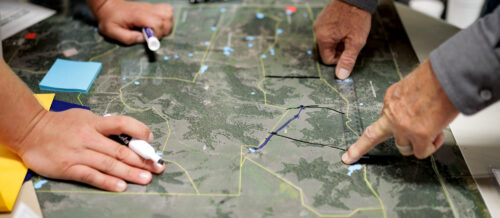Improving versus Maintaining
Regenerative ranching builds natural resources.
In 1945, a self-made Oklahoma oilman looked at the farms and ranches devastated by the Dust Bowl and decided to start a foundation dedicated to “benefiting mankind by assisting agricultural producers.”
Now, nearly 80 years later, Lloyd Noble’s dream of restoring soil health and securing the land for future generations continues with the work of Noble Research Institute, based in Ardmore, Okla. As the largest independent nonprofit focused on U.S. grazing land regeneration, Noble is committed to improving the ecological health of these lands by educating and sharing best practices with farmers, ranchers and landowners across the nation.
Noble’s land stewardship philosophy recognizes that all pillars of an agricultural operation — land, livestock, business and finance, people, management and community — are intricately tied together and must be addressed collectively for working ranches to be successful and our environment to be transformed.

Livestock and grazing focus
Most soil health initiatives focus on row-crop acreages, which fails to address the grazing lands that make up 33% of U.S. land usage, making it the second largest land use in the nation. Hundreds of millions of acres of grazing lands, and the producers who depend on them, are at risk due to overgrazing and the soil degradation that follows.
At Noble, we believe that regeneratively managed grazing animals — cattle, horses, bison, sheep, goats and others — are crucial to the health of pastures and the soil supporting them. These ruminants and other grazing animals play a key role in nutrient recycling through manure distribution, stimulating plant growth and working the soil.
When grazing is managed regeneratively, it drives the below-ground, biological plant-soil-microbe interactions to store atmospheric carbon in the soil — the essential building block for healthy soil — while protecting soil and water from the effects of erosion. That’s why our 2040 goal is, in collaboration with others, to guide farmers and ranchers across the U.S. to measurable regeneration of their land while meeting their financial goals. The key metrics of our success will include:
164 million acres of grazing land transitioned to regenerative management
- 86,000 farmers and ranchers implementing the six principles of soil health
- 75% of farmers and ranchers meeting their financial goals.

The Noble mission
Cattle producers across the U.S. are seeking innovative ways to overcome challenges and find success. At Noble, researchers, trusted agricultural advisors and ranch staff work together to guide farmers and ranchers in applying regenerative management practices across their operations.
Our approach empowers ranchers to thrive in all aspects of their operations, offering not just knowledge, but skills, confidence and new peer connections to navigate the challenges inherent in the livestock business. Our educational programs cover land, grazing and livestock management as well as the business and community aspects of ranching regeneratively. We’re here to make sure farmers and ranchers succeed by providing different paths and ways for them to connect, explore and learn.
Noble ranch managers oversee 13,500 acres of grazing land, livestock operations and pecan orchards in southern Oklahoma. Starting in 2021, we began implementing a new regenerative approach on each of the seven ranches. While each ranch is managed independently according to its use, history and context, the ranch managers all follow the six soil health principles to create balance in the ecosystem and achieve balance with the economics of ranching.

Informed by science and ongoing research
Noble conducts applied research to validate and understand the boundaries of regenerative management. We collect and analyze data from our ranches and as part of major, broad-based studies such as the ongoing study Metrics, Management, and Monitoring: An Investigation of Pasture and Rangeland Soil Health and Its Drivers with major universities and cooperative partners.
This research aims to uncover new knowledge, address challenges faced by farmers and ranchers, and contribute to the broader scientific understanding of soil health and grazing animal production.
Our researchers strive to answer critical producer-guided questions regarding soil management, grazing, economics and business operations to help anyone who might be asking the same questions.
By observing, measuring and studying ecosystem responses, we hope to equip farmers and ranchers with data-backed decision-making tools. This research extends across diverse environments and production systems, from pecan orchards to native rangeland. Research then informs the ongoing management of our ranches, which encompasses all aspects of the environment: soil, plants, animals, water, economics and people.
This real-word application of regenerative management and the collection of data over time by our research staff enable us to provide the education and demonstrations needed to support others as they use regenerative means to restore and preserve their land and help their livestock operations thrive.
Editor’s Note: This is part of a continuing series of articles about regenerative ranching for the American Hereford Association. Follow the series in Hereford World and Baldy Advantage, as well as in special “1881” podcasts, at Hereford.org.
Comment
Leave a Reply
5 comment on: "Improving versus Maintaining""



Rich Collins
June 3, 2025Hugh, How does what you learned at Texas A&M during your time as a student of range management compare to what you practice today? Many similarities? Some? Few? Night and Day?
Hugh Aljoe, Noble Research Institute
June 5, 2025I was only in graduate school in Range Science. My undergraduate was Animal Science and I took one Range class that I did really well in so that professor recruited me to Range for my grad degree. I found the instruction to be complementary to what I practice today. My professor although not a disciple of Holistic Resource Management at all he believe there were a lot of truisms in the book many of which would never be explained through science. But I was open-minded and learned that it is the application of management and not practices that determines the success (or lack thereof) of a practice. Can one ‘read’ the land, livestock and the outcomes from their management? If they can, can they adapt to further the positive outcomes and mitigate the negatives. Management that adapts stocking rate to carrying capacity as it changes, ensures pastures and desirable plants receive adequate recovery before regrazing and that provides for ample residual for rapid recovery of grazed plants and increases ground cover – will tend to result in positive outcomes. Problems occur when these three things are not managed. Continuous graze or rotational graze does not matter if the above three grazing principles/practices are not managed, and it is really difficult to achieve all three under continuous grazing.
Gene Reid
June 3, 2025Just a quick note of appreciation to you folks at Noble!!!!
Calhoun Nelda
June 4, 2025I am leaving 400 ac. Of prime Brazos valley land to my children. They want to engage in regenerative ranching yet the cost of fence management is high. Can you suggest ways to help children redo old fences and make it profitable?
Noble Research Institute
June 5, 2025Nelda, that is great to hear! Fencing work is never fun, but there are ways to improve on some old fencing—you don’t always need to start fresh. I would start with a fence stretcher and see how much improvement you can do with that on you perimeter fencing, as long as the material isn’t too degraded. If you plan to add in adaptive grazing, you likely want to use electric fencing for the smaller paddock breaks.
And remember, no matter what, stay hydrated!